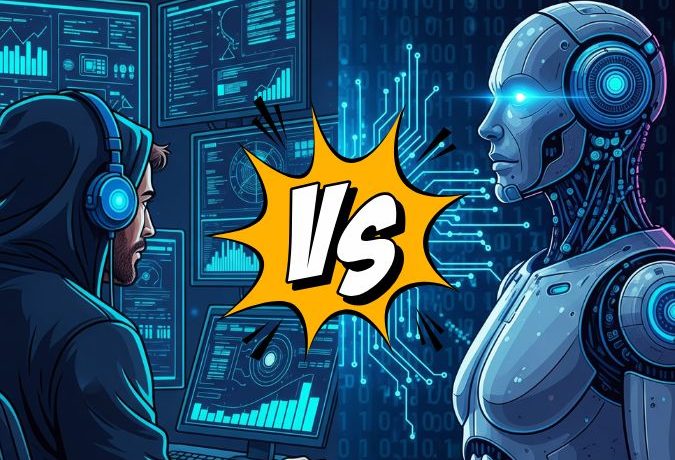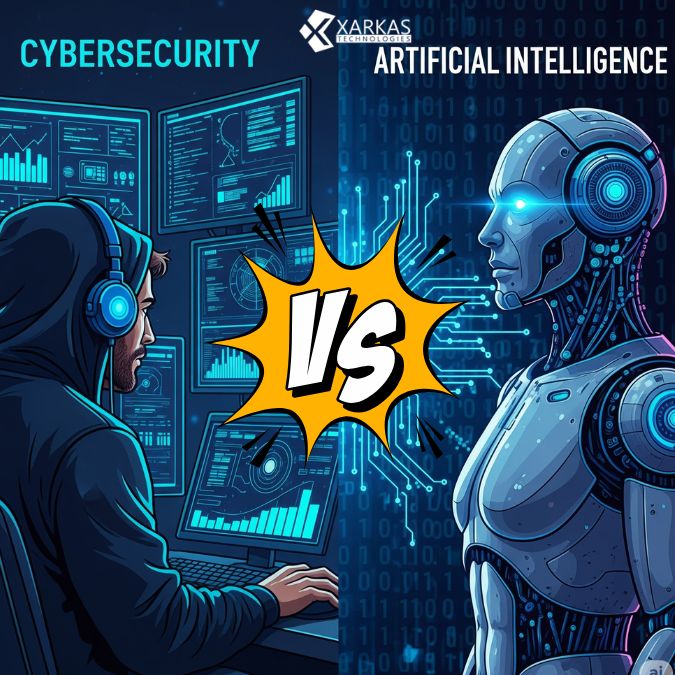
Which is Easy Cybersecurity or Artificial Intelligence? ,What’s Smarter for a Safer Future?
In the fast-paced digital age, cybersecurity and artificial intelligence (AI) are two of the most transformative forces driving innovation, protection, and disruption. Organizations, governments, and individuals are increasingly prioritizing their safety online, and this brings a pivotal question to the forefront: Should we rely on easy-to-implement cybersecurity solutions or entrust AI-driven systems for our security needs?
Table Of Content
- Understanding Cybersecurity: The First Line of Digital Defense
- Key Components of Cybersecurity
- Artificial Intelligence in Cybersecurity: A Double-Edged Sword
- How AI Enhances Cybersecurity
- Cybersecurity vs. Artificial Intelligence: Which Is Better?
- Advantages of Easy Cybersecurity Tools
- Limitations of Traditional Cybersecurity
- Advantages of AI-Powered Security
- Limitations of AI in Security
- The Synergy: Cybersecurity Powered by AI Is the Future
- Examples of Cybersecurity + AI Integration
- How Businesses Can Adopt AI-Driven Cybersecurity
- Top Use Cases of AI in Cybersecurity (2025 and Beyond)
- 1. Advanced Phishing Protection
- 2. Real-Time Malware Detection
- 3. Insider Threat Monitoring
- 4. Cloud Security
- Conclusion: Intelligence Is the Smartest Defense

In this article, we will explore the intersection of AI and cybersecurity, the benefits and risks of both, and ultimately reveal why the convergence of the two is the most effective strategy for a safer digital ecosystem.
Understanding Cybersecurity: The First Line of Digital Defense
Cybersecurity refers to the protection of computer systems, networks, and data from digital attacks, unauthorized access, and data breaches. It includes software tools, hardware defenses, network protocols, and best practices aimed at mitigating threats such as viruses, ransomware, phishing, and insider threats.
Key Components of Cybersecurity
-
Network Security: Prevents unauthorized access and attacks on private and public networks.
-
Endpoint Security: Secures user devices like computers and smartphones.
-
Application Security: Ensures that software is free from vulnerabilities.
-
Data Security: Protects sensitive data from exfiltration or corruption.
-
Identity and Access Management (IAM): Manages who has access to what within a system.
-
Security Awareness Training: Educates users about best practices and social engineering threats.
Easy cybersecurity solutions include firewalls, antivirus programs, two-factor authentication, password managers, and VPNs. These tools are user-friendly, cost-effective, and essential for everyday protection. However, they often require constant monitoring and human oversight to stay effective.
Artificial Intelligence in Cybersecurity: A Double-Edged Sword
Artificial Intelligence is transforming the cybersecurity landscape by automating threat detection, analyzing massive datasets, and responding to attacks in real-time. It excels where human analysts fall short—processing speed, pattern recognition, and continuous monitoring.
How AI Enhances Cybersecurity
-
Anomaly Detection: AI can detect suspicious behavior or traffic that deviates from the norm.
-
Threat Intelligence: Machine learning models scan thousands of data points to flag potential threats before they strike.
-
Automated Response Systems: AI can isolate affected systems and neutralize attacks instantly.
-
Predictive Analysis: Forecasts potential vulnerabilities using behavioral data and attack history.
-
Natural Language Processing (NLP): AI understands and filters malicious emails or phishing attempts.
AI tools like IBM Watson for Cybersecurity, Darktrace, and CrowdStrike Falcon are leading the way in providing autonomous protection, helping organizations reduce the burden on their IT security teams.
Cybersecurity vs. Artificial Intelligence: Which Is Better?
When comparing easy cybersecurity solutions to AI-based systems, it’s important to recognize that each offers distinct advantages and limitations.
Advantages of Easy Cybersecurity Tools
-
User-friendly and accessible
-
Cost-effective for small businesses
-
Immediate deployment
-
Proven effectiveness for basic threats
Limitations of Traditional Cybersecurity
-
Incapable of handling advanced persistent threats (APTs)
-
Requires regular updates and maintenance
-
Human error remains a significant vulnerability
-
Reactive rather than proactive
Advantages of AI-Powered Security
-
Real-time monitoring and threat detection
-
Adaptive learning capabilities
-
Scalable for enterprise environments
-
Reduces manual labor and false positives
Limitations of AI in Security
-
High implementation cost
-
Requires large datasets for training
-
Potential for AI bias or misjudgment
-
Still requires human oversight for fine-tuning
The Synergy: Cybersecurity Powered by AI Is the Future
Rather than choosing between easy cybersecurity or AI, the optimal solution is integration. Combining traditional security tools with AI-driven technologies creates a multi-layered, intelligent defense strategy that evolves with emerging threats.
Examples of Cybersecurity + AI Integration
-
Smart Firewalls: AI-enhanced firewalls that dynamically adjust rules based on real-time data.
-
Biometric Access Control: Facial recognition and behavioral biometrics powered by machine learning.
-
AI-driven SOCs (Security Operations Centers): Automate incident response and triage.
-
Zero Trust Architecture: AI evaluates trust continuously, not just at login.
With cyberattacks becoming more frequent, sophisticated, and stealthy, the traditional security approach alone is no longer sufficient. AI injects speed, intelligence, and adaptability into the equation—transforming how we approach defense.
How Businesses Can Adopt AI-Driven Cybersecurity
Implementing AI in cybersecurity doesn’t have to be overwhelming. Here’s a step-by-step approach businesses can follow:
-
Assess Security Needs: Identify gaps in your current cybersecurity infrastructure.
-
Start with AI-Assisted Tools: Deploy AI-enhanced antivirus or endpoint protection software.
-
Invest in Staff Training: Train your security team to understand and manage AI systems.
-
Integrate Threat Intelligence Platforms: Leverage AI to pull data from global threat databases.
-
Monitor & Optimize: Regularly assess the performance of your AI systems and update them.
Top Use Cases of AI in Cybersecurity (2025 and Beyond)
1. Advanced Phishing Protection
AI models detect patterns and anomalies in email behavior, flagging suspicious messages before users even open them.
2. Real-Time Malware Detection
Machine learning scans for code signatures and behavioral anomalies that indicate new, unknown malware.
3. Insider Threat Monitoring
AI watches for changes in user behavior, such as access anomalies or data movement patterns, to prevent insider data leaks.
4. Cloud Security
As businesses migrate to the cloud, AI ensures that workloads, applications, and storage are secure from intrusion.
Conclusion: Intelligence Is the Smartest Defense
In the battle between easy cybersecurity and artificial intelligence, the answer is not about choosing one—it’s about leveraging the strengths of both. While traditional tools provide a necessary foundation, AI delivers the agility, foresight, and speed required to combat the evolving landscape of cyber threats.
We believe that the future of cybersecurity is intelligent, automated, and adaptive. By combining accessible cybersecurity practices with cutting-edge AI solutions, organizations can not only defend against current threats but also anticipate and neutralize future ones—before they materialize.
Security is no longer a choice between simplicity and sophistication. The real innovation lies in their integration.







No Comment! Be the first one.